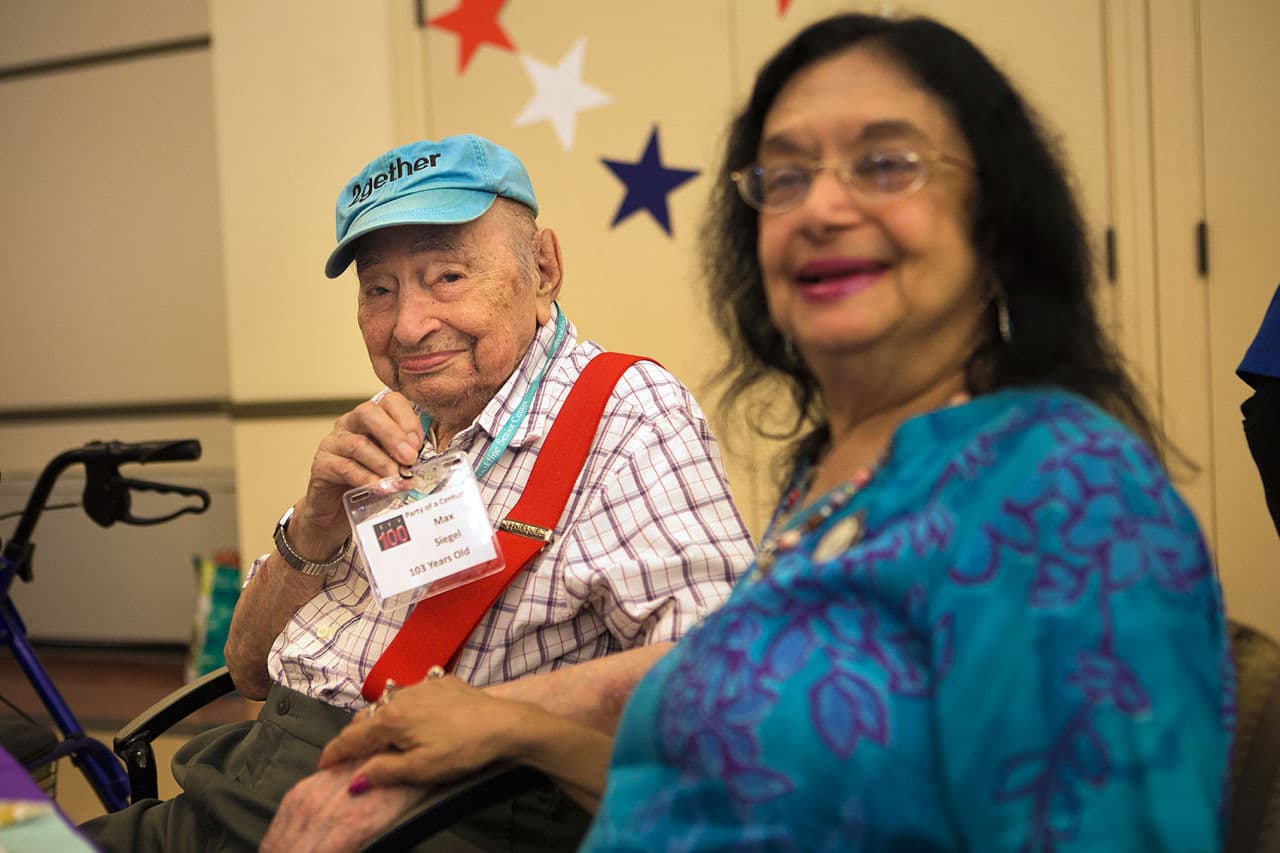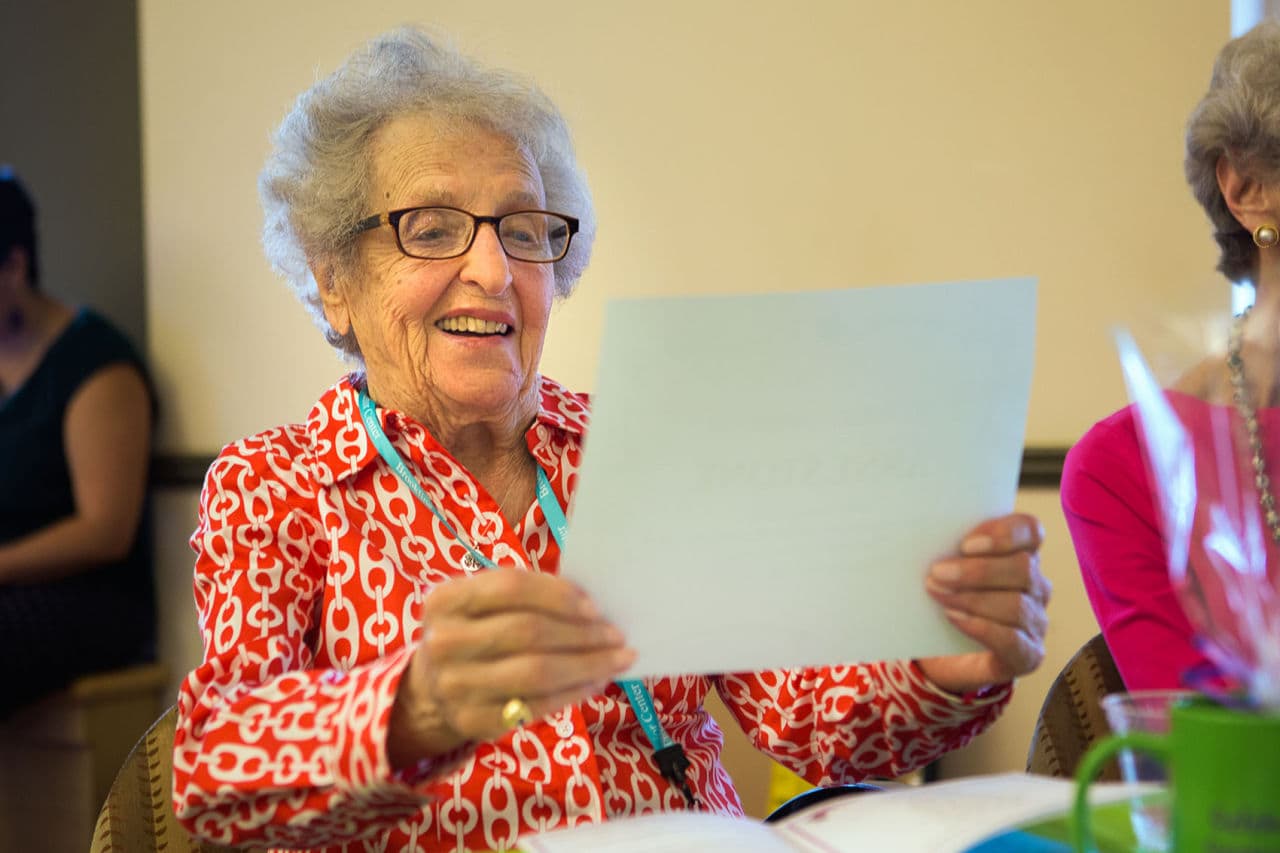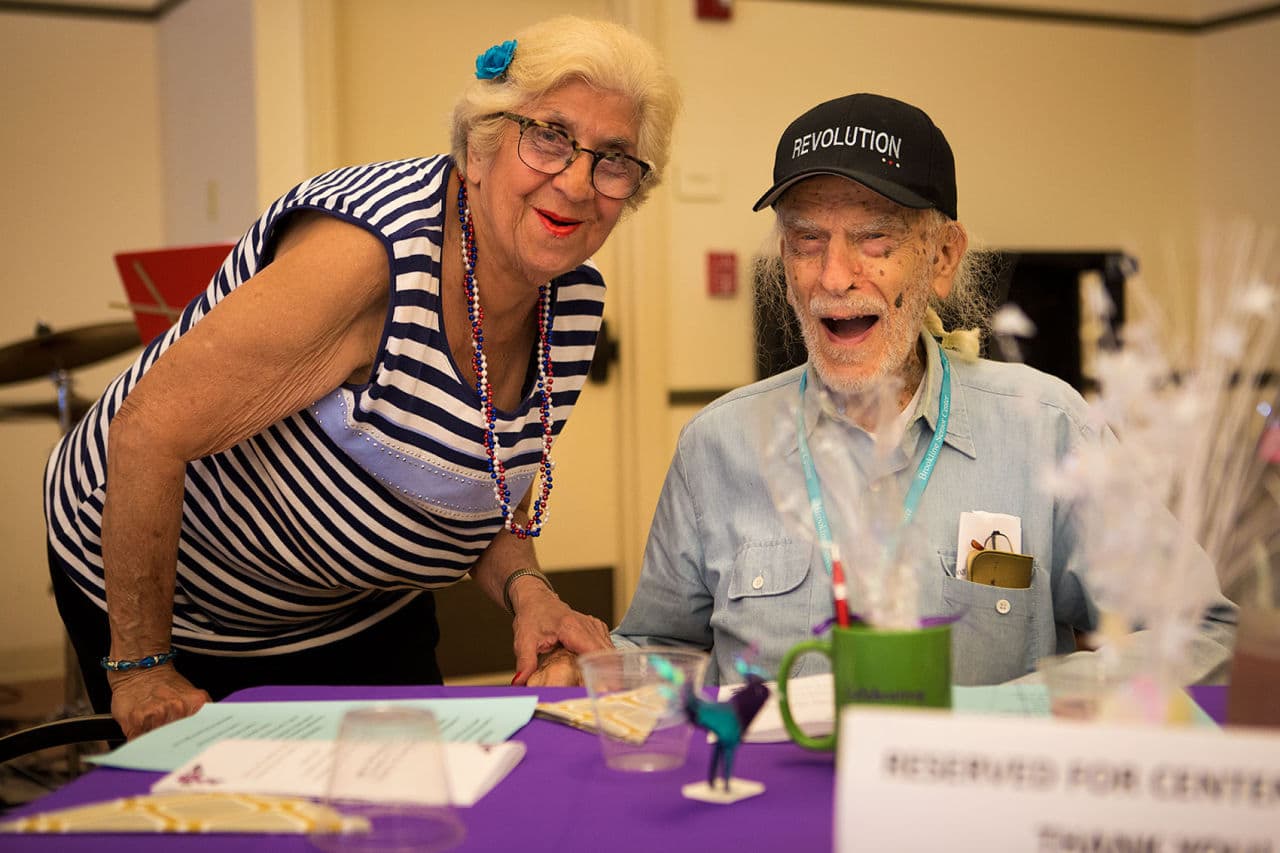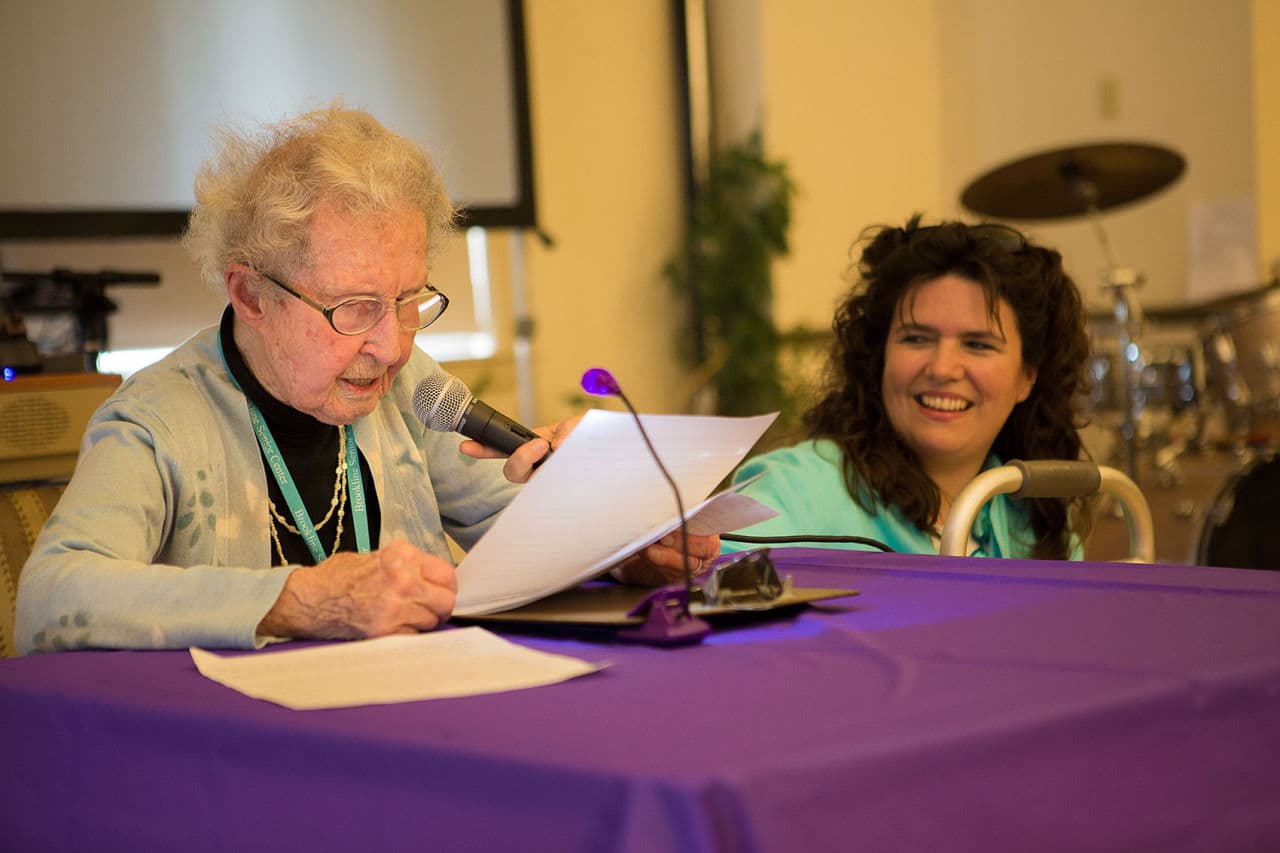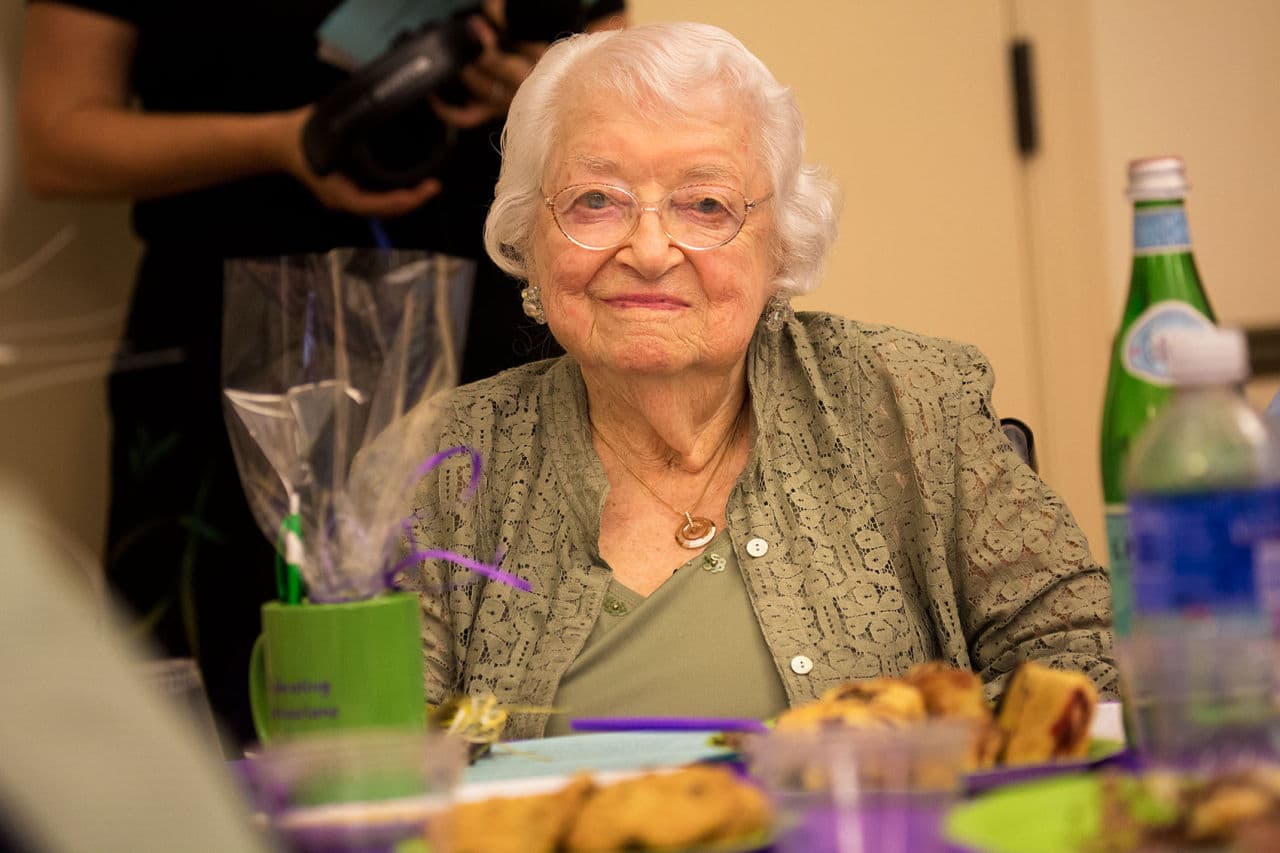Advertisement
Happy 100 To You, And You — Centenarians Multiply, At Forefront Of Age Wave
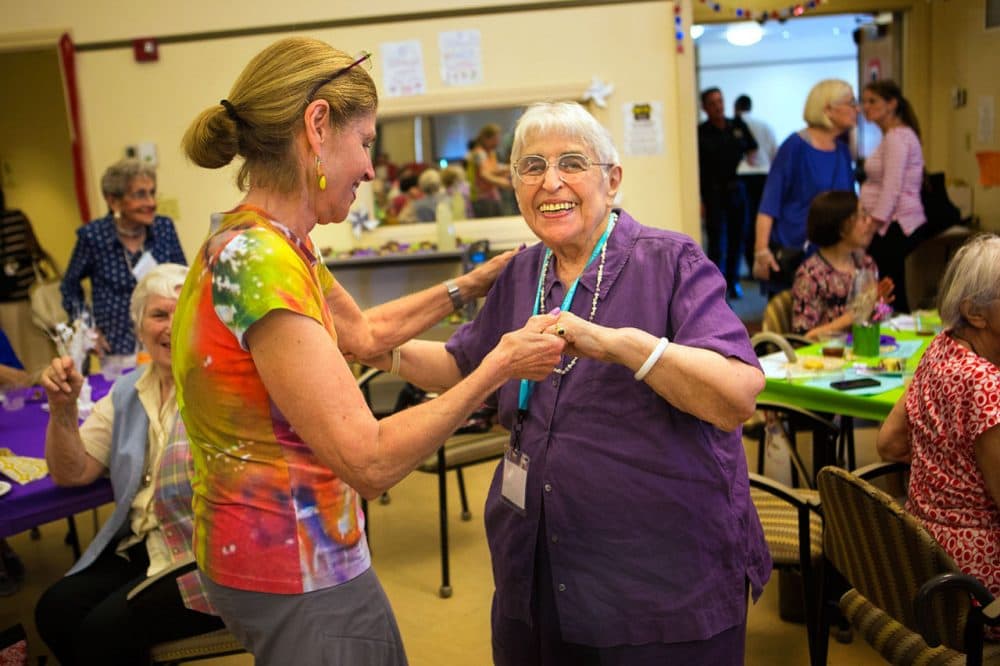
It’s a rare milestone, to turn 100 — but not nearly as rare as it used to be.
This week in the town of Brookline, Massachusetts, the senior center hosted more than a dozen local centenarians for a "Party of the Century." In the not-so-distant past — centenarian parties in 2002 and 2007 — party organizers had to reach out to centenarians from all of Greater Boston to gather a critical mass for a fete.
But now, the 99-and-over set has so grown that the party had to limit itself to just Brookline, says Ruthann Dobek, director of the Brookline Council on Aging. And if the numbers keep growing, she told the crowd, "we're going to have to start it at 105 or 110 to be eligible."
The centenarians are the leading edge of the fastest-growing sector of the population: people over 60. In this state, the population over 60 has grown 17 percent over just the last five years, and the over-60 cohort will soon outnumber people under 20 for the first time in history, says David Stevens, the executive director of the Massachusetts Association of Councils on Aging.
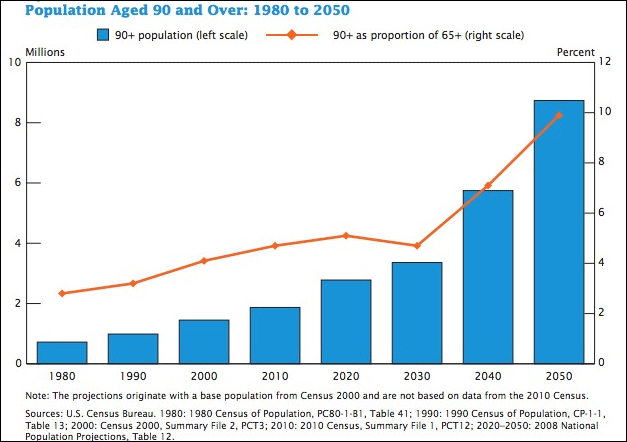
As the great bulge of the baby boom reaches advanced age, even the population over 90 in the U.S. is expected to skyrocket. (See the accompanying chart.) By 2060, America may have a couple of million boomer centenarians, says Dr. Thomas Perls, founder and director of The New England Centenarian Study at Boston Medical Center.
"It is a remarkable demographic accomplishment that is sweeping the world at this point," Dobek told the gathered Brookline centenarians this week. "There was a time when there was only a handful of people who would make it to the age of 100, and recent statistics say that worldwide, there’s 300,000 of you. So...wow!" (A moment for applause.) "It’s just an unbelievable accomplishment."
What makes that demographic accomplishment possible? Dr. Perls says the explanation begins in the early 1900s, when a quarter of newborn children still died. Public-health measures, like clean water supplies, improved, as did medicine. So, far fewer people died young. Then, he said, in the 1950s and '60s came improvements in treatments for high blood pressure, cardiovascular disease, obstetric issues, "a vast number of improvements that kind of had a booster rocket effect of propelling a lot of people who would have died in their middle ages into old age."
Advertisement
And now for the genetics: "I believe about 17 to 20 percent of the population has the genetic signatures that would enable them to get into their late 90s or even to 100 years old," Perls said. "So there's just a greater proportion of that group that would have died of easily reversible causes, of disease, but due to public health measures they didn't do that, and have the opportunity to get to these very old ages."
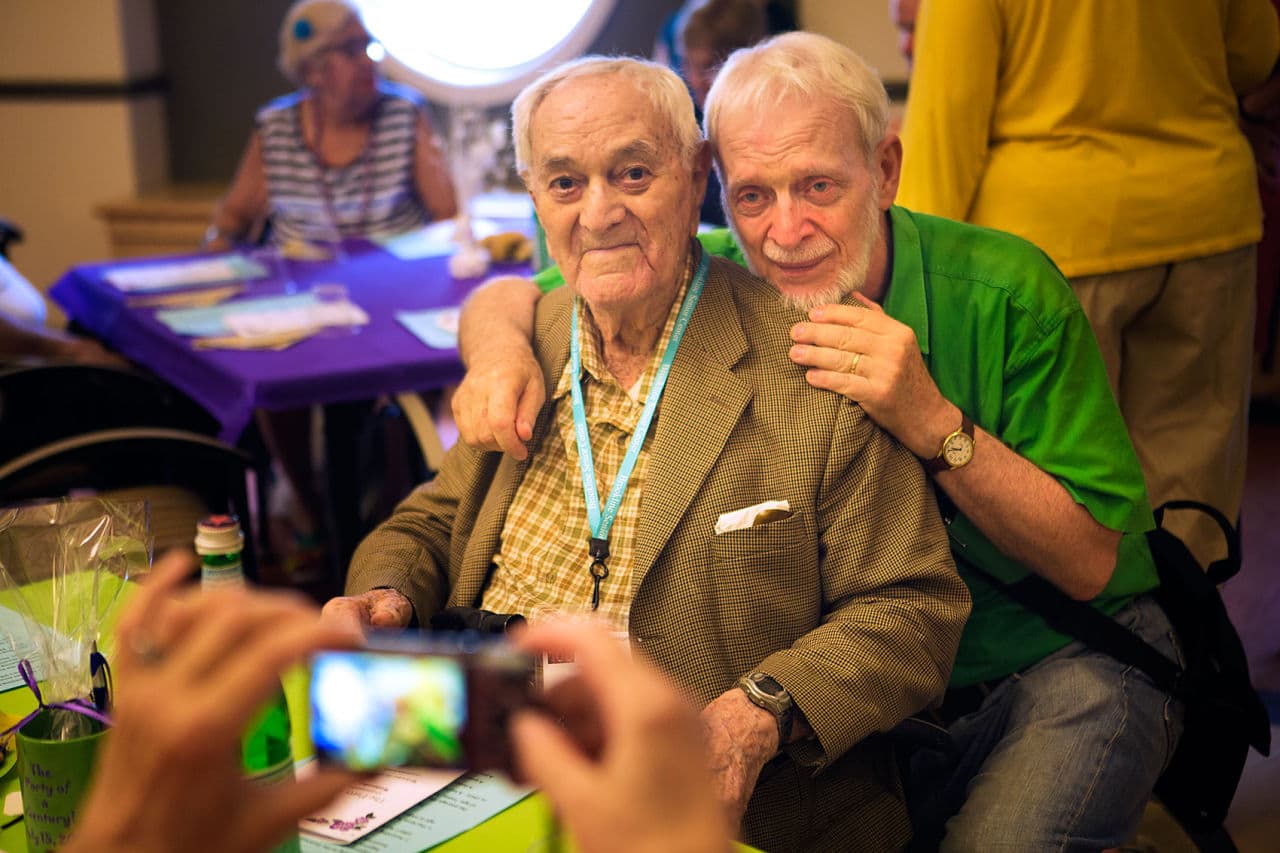
Living longer is mostly a good thing, right? But here’s some wisdom from 105-year-old Sadie Snyder, the oldest person at the Brookline party: "Well, there’s always good and there’s always bad..."
What may be bad — or rather, cause for concern — about the swelling wave of older population is that society is not fully set up for it. Many older people want to stay in their homes as they reach advanced age, what’s called “aging in place.” But the older they get, the more help they may need with food and home care and more.
The No. 1 issue for aging in place is transportation, Brookline's Dobek says. Centenarian parties easily draw attention, she said, "but if I’m talking about getting people to the grocery store and the bank and the doctors, it’s less of interest yet very expensive to run and essential."
Everyone talks about the demographics, she said, "but I don’t think policymakers and our legislative body have spent enough time on, what does that mean? People want to age in place, stay at home, and they need services. How are we going to address that?"
But let’s not get too negative — the centenarians at the party certainly didn’t. They laughed and ate cake and watermelon, and a few even danced a bit. It was a little like a graduation party — replete with the reading of the names of the honorees.
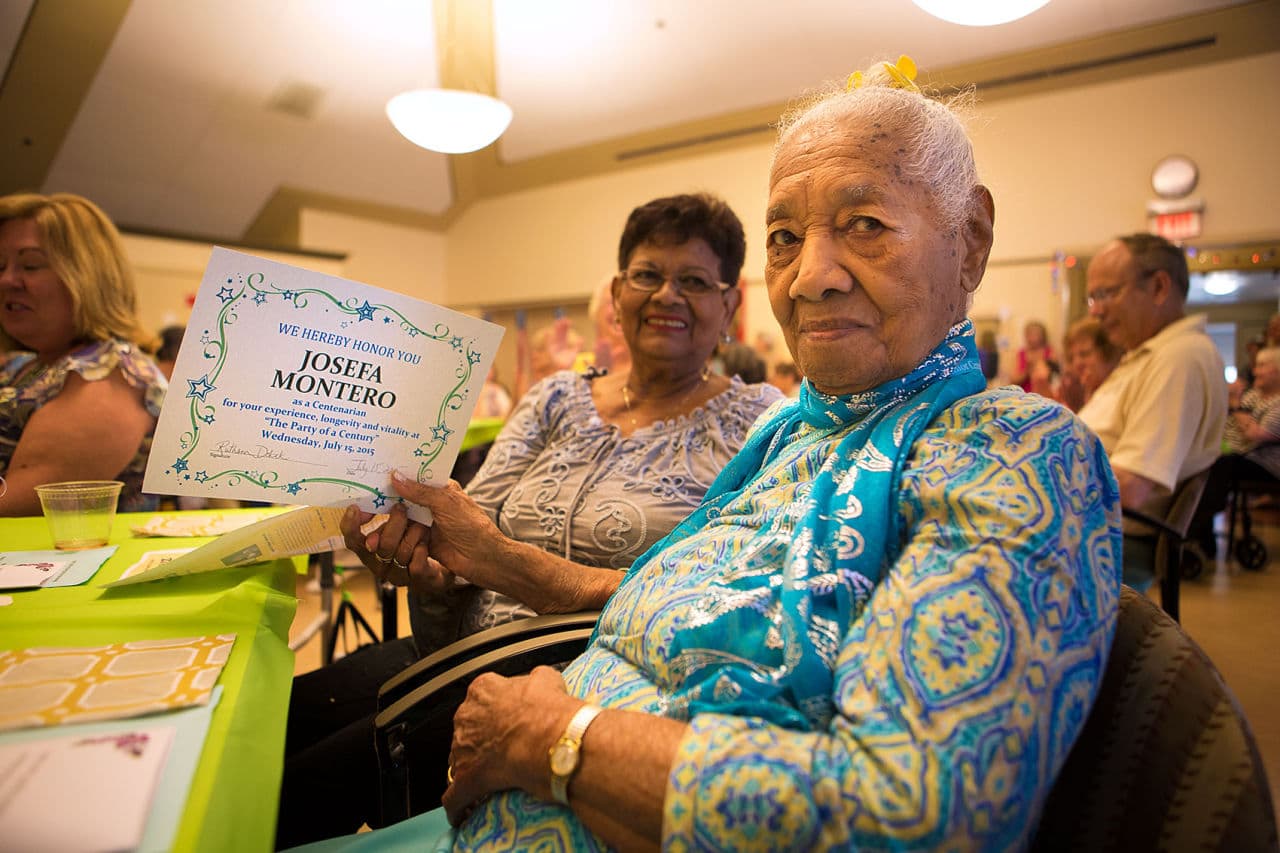
Some centenarians demonstrated the sort of realistic positivity that's found in a striking number of longevity outliers. Anne Stone, who's about to turn 100, recently had to give up driving.
"And that's what I miss a lot — the freedom of just getting in and going wherever you want to, when you want to go," she said. "But look, I had to do the best for me. It just got to be too much. I may look younger than I am, but the body isn't there."
Snyder, the 105-year-old, didn't get married until she was 60. "I don't find fault with anything," she said of her current attitude. "I just have a different view of things. If I hear something bad, I try not to dwell on it, and if I hear something good, I like to hear it."
She graciously responded to the inevitable question about how she has lived so long: "I think it's what you put in your mouth," she said. (She gave up meat long ago.)
Karmi Wand, 100, quoted Herbert Hoover about the pleasure of lasting longer than your rivals: "When I think of all my competitors, I outlived the bastards!"
And Max Siegel, who is almost 103, cited the joy of music: "How do I do it? I used to love to sing, and when you sing you never cry."
Some of the centenarians even performed: Siegel sang the sentimental paean to Jewish mothers, "My Yiddishe Mama." Elinor Downs, 103, read aloud her memoir about getting her first iPad at the age of 100, and what she learned when she Googled herself.
She enjoys her iPad, she said, but "at heart, I'm really just old-fashioned. Along with my iPad adventures, I still need the voice on the telephone, the intimacy of a face-to-face meeting, and the closeness of a hug."
Readers, thoughts? If you're wondering if you have what it takes to reach 100, the New England Centenarian Study offers a fun calculator of your life expectancy here. More images of the party:
